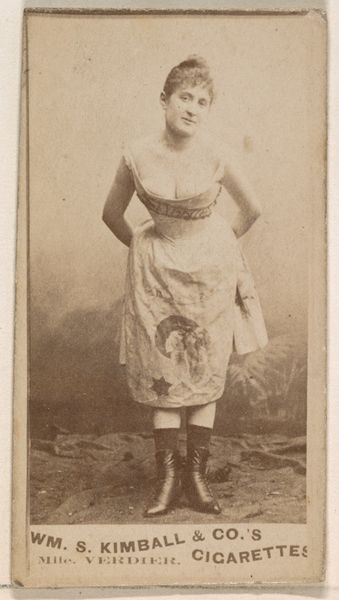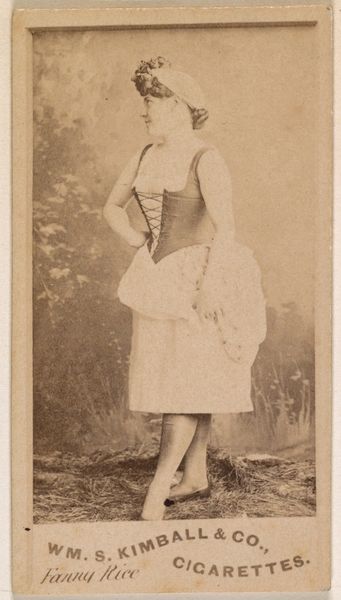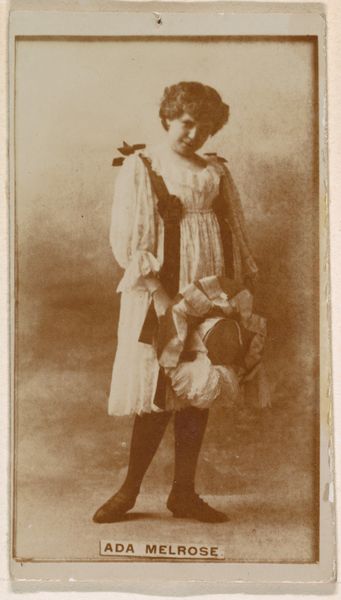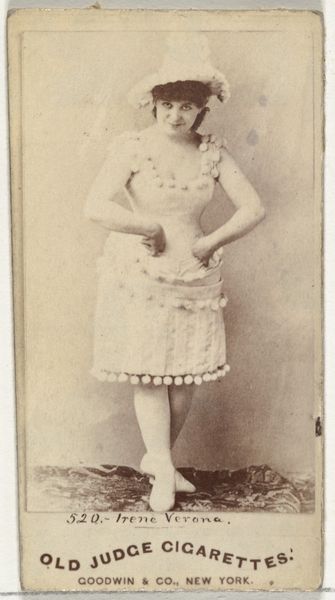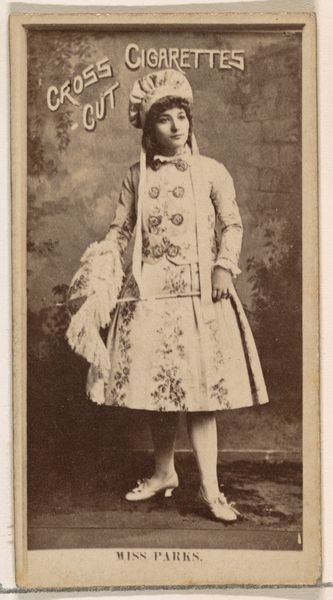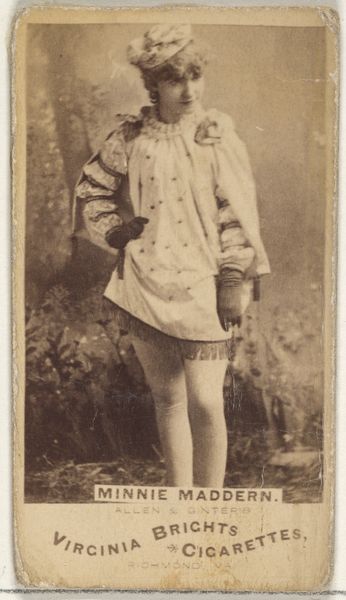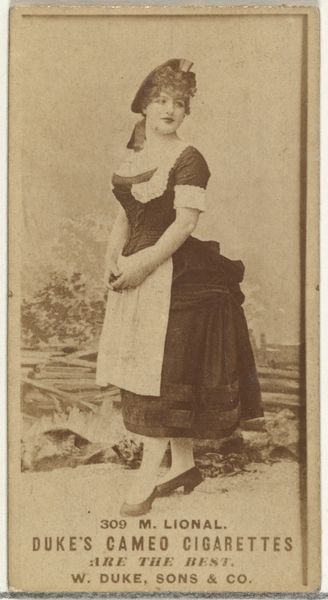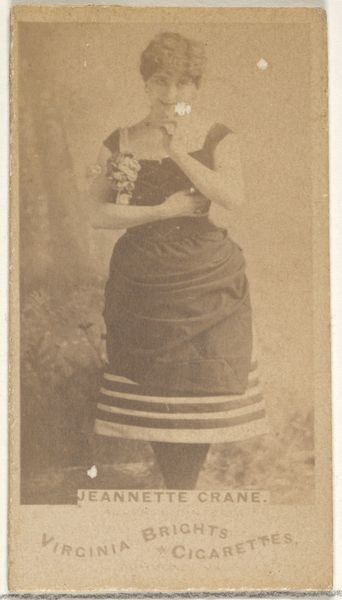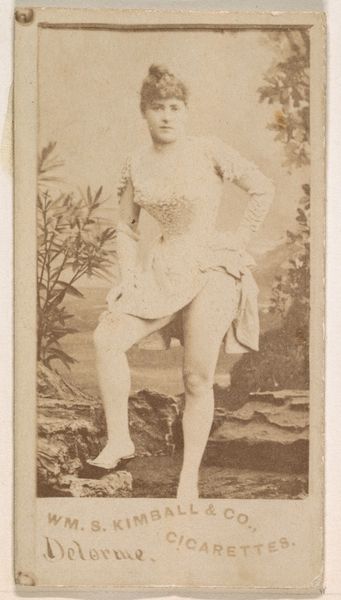
Miss Binnon, from the Actresses series (N203) issued by Wm. S. Kimball & Co. 1889
0:00
0:00
photography
#
portrait
#
photography
Dimensions: Sheet: 2 5/8 × 1 3/8 in. (6.6 × 3.5 cm)
Copyright: Public Domain
Editor: Here we have "Miss Binnon," a photographic print from 1889 by Wm. S. Kimball & Co. There's a pensive mood, maybe even a touch of melancholy, conveyed through the soft sepia tones and Miss Binnon’s downward gaze. What formal qualities stand out to you? Curator: Immediately, the figure-ground relationship demands attention. Miss Binnon is centrally placed, yet the background, though blurred, offers visual interest with its organic forms. How does the interplay of light and shadow shape your reading of her character? Editor: I notice that the dress and backdrop both possess curved lines. Curator: Precisely. Note also how the dark and light contrast across the horizontal bands of the skirt create a subtle division, mirrored perhaps by the textural contrasts found in the lithographic elements – the softer photographic print set against the hard edges of the company’s typeface below. Is there an interaction between figure and text, perhaps? Editor: The figure appears less harsh than the text that accompanies it. Do you think that's deliberate? Curator: The composition may indicate the status of this subject. Binnon's likeness has an elegance from the slight asymmetry in her pose, which counters the rigid lines within her garment. Where the figure finds a soft elegance, the company finds its stark advertisement. What do we learn by considering their shared form? Editor: So by analyzing these elements – the color, composition, even the typeface – we can uncover layers of meaning. Thank you! Curator: Indeed. Form is not merely a vessel but a dynamic carrier of content. Considering this, my perspective on print and photography has greatly widened.
Comments
No comments
Be the first to comment and join the conversation on the ultimate creative platform.
